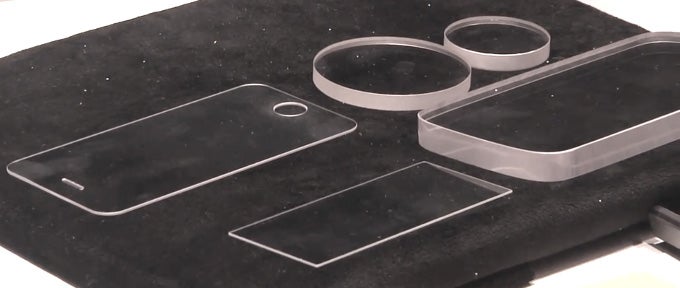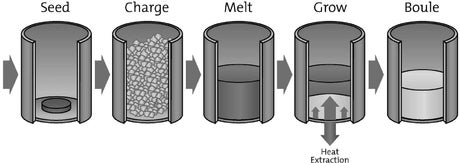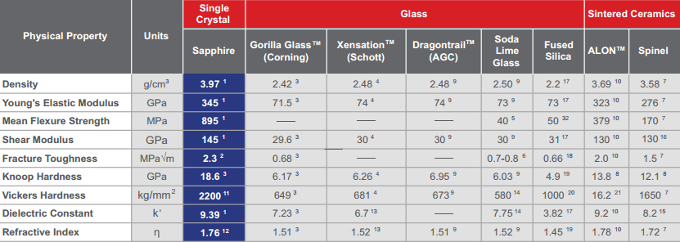Sapphire vs Corning’s Gorilla Glass: what is sapphire and is it really tougher?

What’s sapphire and how it’s manufactured
Sapphire is a gemstone that naturally occurs in nature in various forms and colors. A red sapphire is actually called a ruby, and blue sapphire is often used in jewelry, but sapphire also occurs in a perfectly color-less, transparent form, and that’s the exact type that could come in use in smartphones.
What makes it so special, though? Sapphire is one of the hardest materials on Earth, ranking 9 out of 10 on Mohr's scale of hardness, falling short of just diamond that has 10 out of 10. In practice, this means that only materials like diamond can scratch sapphire, and unless you're carrying diamonds in your pockets (we sincerely wish you to), a sapphire display would remain perfectly pure and scratch-free after months of use. Glass in general ranks 5 out of 10 on the same scale, and is much less protected from common pocket threats like keys and sand.

Sapphire production process
With a business measuring more than 30 million smartphones sold every quarter, Apple needed to not only secure sapphire orders, it needed a lot of them. Rather than mining it from ores, though, and getting it in its pure form, it’s much more practical to ‘grow’ synthetic sapphire in furnaces. The actual process of manufacturing such sapphire boules is very interesting, and involves furnaces getting heated up to temperatures as high as 3300 degrees Fahrenheit (1815 C), to melt a hockey pluck-sized piece of the gemstone mixed with aluminum oxide powder.

In comparison, Corning's Gorilla Glass is essentially a type of tempered glass and, while details of the particular Corning method of toughening it up remain a secret, we know that Gorilla Glass emerges after a sheet of glass is dipped into a bath of salts, a material that shrink-wraps around the actual glass substrate, adding pressure around the glass material. This is what what adds that extra bit of strength to Gorilla Glass.
The problem with this layer, though, is that when you scratch that 15-micron thin film you damage the material and release the stress. After accumulating a few of those scratches, it’s very likely that at some point when the phone drops you’ll get a crack along that scratched line (we've all seen the spider webs of cracked phone screens).
Properties

It gets interesting when we dive deeper in the numbers, though. We've already told you about the general rating of sapphire (including synthetic sapphire) on Mohs scale (9 out of 10) and how it compares to glass (5 out of 10). The chart below gives even more technical details, and while it is produced by sapphire maker GT Advanced, the numbers are not skewed in favor of any of the materials.
You can see a clear dominance of sapphire in practically every aspect: the number you would probably be most interested in is 'fracture toughness' that measures 2.3MPa√m, nearly triple the fracture toughness of Corning's Gorilla Glass, but others as well: sapphire is tougher by means of elasticity and hardness.
Sapphire is also brittle like glass, but much harder to scratch
Interestingly, sapphire is also nearly 70% heavier, denser than glass (3.98 grams/cm3 vs 2.54 g/cm3), so that means that to have the same weight, a sapphire cover glass would also have to be thinner. Is this possible? We're yet to see, but if not, sapphire would come with one downside of increasing the overall weight of a device.
Sapphire properties, as per GT Advanced
Cost of sapphire vs cost of glass, and future use
One big obstacle that companies like Apple have to overcome with sapphire is its multiple times higher price than glass. Sure, we’ve been talking about all the flaws of Corning’s Gorilla Glass, but it ends up costing around $3 apiece. Sapphire, in comparison, used to cost around $25 apiece, and only recent developments have allowed dropping its price to below $10 levels, according to estimations by industry sources.

reference: GT Advanced, PocketNow












Things that are NOT allowed: